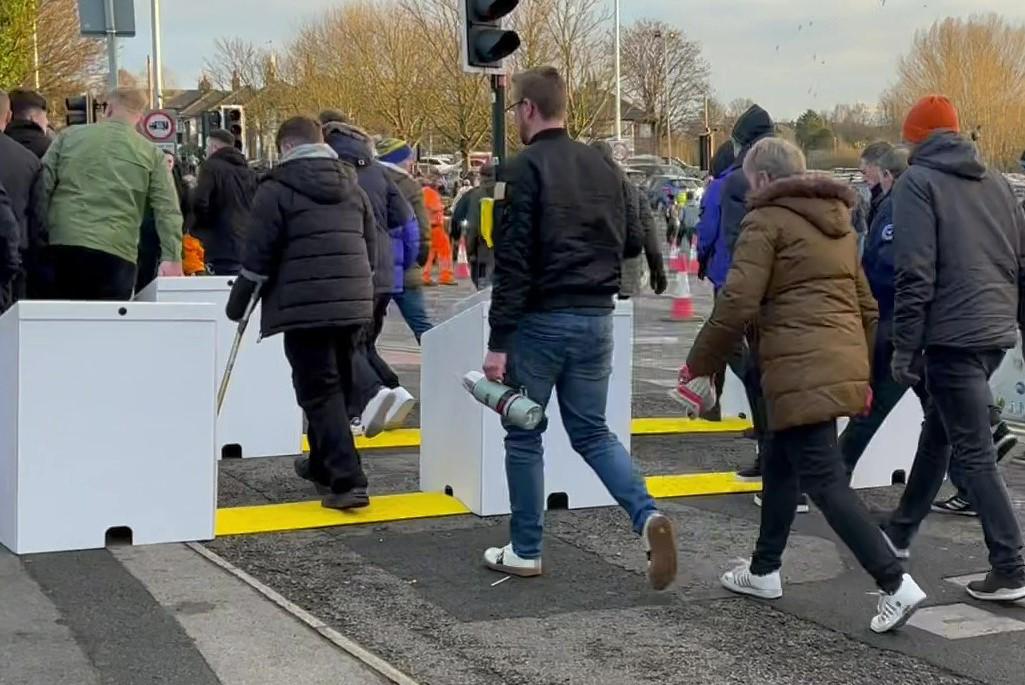
Last Thursday, we heard the news that so many across the counter terrorism community, the hospitality sector, and the general public have been anticipating for so long: Martyn’s Law was given royal assent as the Terrorism (Protection of Premises) Act: 2025.
The new legislation follows a long battle by Figen Murray OBE and her fellow campaigners, in the wake of the Manchester Arena bombing, in which Figen’s son Martyn, and 21 others were killed. It brings with it mandatory obligations for qualifying premises open to the public, venues, and events to consider the terror threat, understand their vulnerabilities, and take proportionate steps to protect people from harm in the event of an attack.
After such a long campaign, the new law will feel like the end of a journey for some, but it’s actually the starting point for most of those affected by the changes. The UK government has stated that there will be an implementation period for the legislation, such that is it not likely to come into effect until 2027 – but that doesn’t mean that there’s time to kick the can further down the road. Far from it; the clock is now ticking to consider what you need to do to comply, so we have compiled this simple guide to next steps.
- Establish whether Martyn’s Law affects you
Martyn’s Law affects any premises accessible to the public, either by payment, right, or permission (expressed or implied), with a capacity of 200 or more. It also applies to any outdoor event or pop-up with a capacity of 800 people or more. If this describes your premises or event, the legislation probably does apply to you, but that doesn’t necessarily mean you will have to make a large investment in additional security.
- Know which tier of ‘duty’ applies to you
Martyn’s Law is split into two tiers of ‘duty’: the Standard Duty rules apply to premises with a capacity of 200 – 799 people, while Enhanced Duty rules apply to premises or events with a capacity of 800 people or more. All the requirements for Standard Duty premises apply to both tiers, and there are additional requirements for Enhanced Duty premises and events. You can find out more about what’s required for each tier on our website.
- Carry out a risk assessment
A risk assessment is a vital step in understanding what measures you may need to put in place to protect people in the event of a terror attack.
The free risk assessment tools and templates available from ProtectUK are a useful resource to get you started, but those in the Enhanced Duty tier may also need to invest in a professional Threat Vulnerability and Risk Assessment (TVRA) and Vehicle Dynamics Assessment (VDA) to provide a more detailed and robust insight into the risks that need to be mitigated, along with recommendations for appropriate and proportionate measures.
It’s important that your risk assessment considers all types of terror risks, including your vulnerability to hostile reconnaissance. There may be simple steps you can take to reduce risk that will cost very little or nothing at all, such as removing plans of your premises from your website, for example, adjusting the position of CCTV cameras, or updating security protocols.
- Put together a plan
Your plan might change as the deadline for implementation gets closer, but creating a plan now means that you will have time to test and refresh it as you work towards compliance. At SAFECROWDS Group, we offer table-top exercises to help you test your plan so that you can be confident it is as robust as possible.
Your plan should outline how you plan to mitigate risk, roles and responsibilities, and incident response. You’ll need to keep it updated if there are any relevant changes, such as changes to your building or your team, for example, and you’ll need to ensure that your team is familiar with the plan.
- Train your team
None of us knows how we’ll respond to a crisis until we have been in that situation, but your team will have a much better chance of knowing what to do and how to protect people from harm if they have been trained.
Free ACT training is available from ProtectUK and your team can complete it online in less than an hour. It is also worth considering basic first aid for the whole team and everyone should have some training to familiarise them with your incident response plan so that they know what to do if an evacuation or lockdown is needed.
For those in the Enhanced Duty tier, further training may be advisable for the senior team to help with scenario planning, preparedness and response. At SAFECROWDS Group, we provide bespoke counter terrorism courses that will help you plan ahead and respond decisively should the worst happen.
- Invest in your security
You may already have security in place, but is it focused on protecting people from terror attacks? Terror tactics are evolving all the time, so you may need specialist expertise or equipment to protect people at your premises, and the surrounding areas where queues and crowds form. At SAFECROWDS Group we offer a range of services, including TVRA and VDA risk assessments, specification, supply and installation of hostile vehicle mitigation (HVM) equipment, canine explosives detection teams, and behavioural detection specialists. We have been helping clients across a range of hospitality, events and sports businesses to prepare for Martyn’s Law, understanding their operational and commercial parameters as well as their risk.
During this period between royal assent and implementation for Martyn’s Law, it’s important to consider what proportionate measures may be needed as early as possible, so that any budgeting and procurement can be done early.




